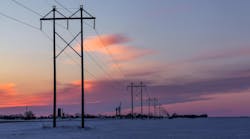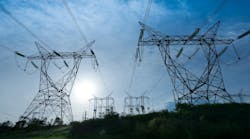Part of the fun of being a consulting engineer is never knowing what adventure the next phone call will bring. The past year has brought me a variety of assignments, from wind farm substations to life-extension investigations of HVDC converter stations, but none of that prepared me for a call from Rick Bush. It was another of his famous “pack your bags” announcements.
The last time this type of request came, I found myself in the middle of the restoration effort for Hurricane Ike in south Texas. Don't get me wrong, that trip was very rewarding, but it was also extremely challenging.
This time the fickle finger of fate was extremely kind. As T&D World's technical writer, Rick wanted me to head off to Europe and explore the latest developments in HVDC technology. I have been involved with HVDC for more than 30 years, including serving as the chairman of the IEEE PES HVDC & FACTS subcommittee and building a back-to-back converter station, so this seemed like a natural assignment for me to tackle.
Like many assignments, this one evolved from a series of previous assignments. A few years ago, Rick and I started exploring the subject of renewable energy, which produced a supplement about connecting renewables to the grid (March 2009). We had no idea how this subject would lead us into so many other areas of technologies that seemed unrelated at first glance.
The renewables supplement pointed out that wind and solar generation needed some form of energy storage, which we shared in a second supplement on energy storage (August 2009). This led to a third supplement. Someone had the idea that if a wind farm was geographically huge, the wind had to be blowing somewhere along the array, which would make the resource more dependable (March 2011).
This spawned the latest supplement. Enormously large wind farms are remote, but bringing their power to the load centers is a huge challenge, which has attracted a great deal of attention in the new “old” technology of HVDC.
I say it is a new “old” technology because it has been part of the electric utility industry for an extremely long time. The first modern HVDC transmission link dates back to 1954 with ASEA's connection between the Swedish mainland and Gotland Island. Strangely, there are many unaware of the role HVDC technology has been playing in our industry.
Where once it was thought of as a niche market, HVDC has become a major integrated part of the grid. Granted, in some parts of the world it is playing a lesser role than in other parts, but that is changing. As engineers understand the technology better, they find applications that will improve their systems. And that is why I traveled to the epicenter of HVDC activity — Europe — to see what is happening.
Wow, What an Opportunity
My trip stared out in Zurich then moved on to Sweden, which was followed by a stop in Tallinn, Estonia. I finally said auf wiedersehen to Europe when I hit Germany. In a week, I had covered way too miles and spent every night in a different hotel, but I touched the pulse of the technology.
The result of this hectic pace was a series of meetings with engineers, scientists and executives — all HVDC experts. You might say it was a deep immersion into a multifaceted subject. To borrow from a favorite poem: Thyristors to the left of me, multiple-level converters to the right of me, dc circuit breakers in front of me, dc simulation center behind me.
In my mind, it was the equivalent of being sent to an HVDC Disneyland, which way over stimulated the nerd HVDC engineer in me.
The Human Touch
I can't think of a better way to spend an afternoon than sitting with the manager of an R&D department discussing the future direction of HVDC technology over endless cups of coffee. Unless, of course, it is being able to travel from city to city, meeting the folks responsible for manufacturing equipment, designing converter stations and seeing actual HVDC facilities.
My trip made it possible for me to meet the people behind so much of the development taking place in this mind-blowing technology. It was great seeing and touching the hardware, but talking with the people responsible for R&D defined the human interface of the technological challenge.
It also pointed out the differences in global philosophies. There are places in this world where their attitude places no limits on HVDC applications. As a result there are ±800-kV systems with ±1,100-kV and ±1,200-kV UHVDC in development. Others see HVDC as a technology that will allow a more stable grid and access to remote renewables. Some approach HVDC as a niche market of limited capability, and they are waiting for the technology to develop. It all depends on your perspective and knowledge.
As it turned out, this trip was reminiscence of Hurricane Ike: challenging and rewarding. It also reminded me of the movie If It's Tuesday, This Must Be Belgium. I can't wait for that next phone call: Where will it send me? What will I learn? Who will I meet? The adventure continues.

